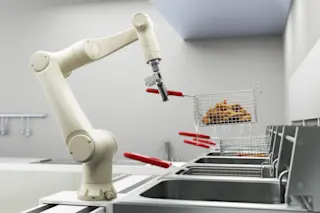A third, robotic arm can increase productivity. But given enough robotic arms, you might even take on Spider-Man. (Credit: Mary Evans/COLUMBIA PICTURES CORPORATION AND/Ronald Grant/Everett Collection) Just imagine what you could do with a third arm. You could sip coffee and type an email. You could scratch your nose and play Call of Duty. You could solve the Rubik’s cube and conduct a symphony. You could play Ping-Pong and knit a sweater. Clearly, we could all use a third arm. Fortunately, giving us a hand with a third arm might be a promise science can deliver on, like, soon. That’s because engineers at the Advanced Telecommunications Research Institute in Japan recently showed off a brain-machine interface that allows them to complete two different tasks using their fleshy arms in concert with a third, mind-controlled robotic arm. While cloning ourselves for the sake of productivity is out of the question for ...
What Would You Do With a Third, Mind-Controlled, Robotic Limb?
Discover how a mind-controlled robotic arm enhances multitasking, allowing users to perform tasks effortlessly with three appendages.
More on Discover
Stay Curious
SubscribeTo The Magazine
Save up to 40% off the cover price when you subscribe to Discover magazine.
Subscribe













